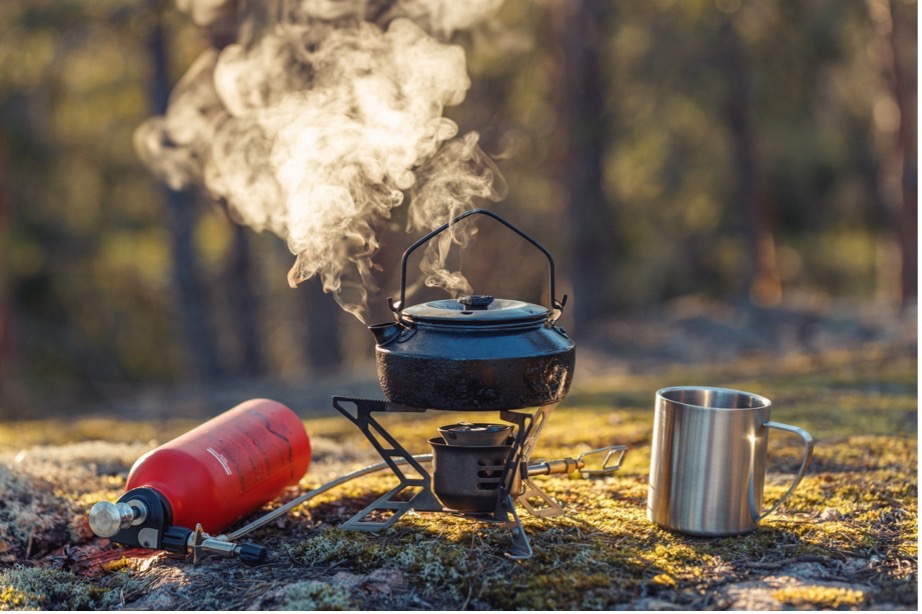 Add My Company
Add My Company
Cooking Hacks for Camping Gas Stoves

Summer is officially here, and despite the moody weather, we are positive the most adventurous among you are already planning exciting activities in the great outdoors. Whether alone, with a group of friends, or with family, camping is one of the best experiences during this season; all it requires is the right equipment, especially if you want to make it environmentally friendly.
Among the essentials, a reliable camping gas stove is a must-have for your equipment, as it provides a convenient way to cook easy meals in the wilderness when you are far from home. But how to make the most of your camping gas stove? What are the best gases to fuel it properly?
In this blog, we will discuss everything you need to know about portable gas stoves and their benefits, sharing handy tips for cooking easy dishes when camping to maximise the efficiency of your gas stove and enhance your experience in nature.
All the Benefits of Camping Gas Stoves
Whether you are an event organiser planning outdoor expeditions for large groups or enjoy planning adventures with your family, you know that camping gas stoves are an extremely popular choice for outdoor cooking. This is due to the many benefits they offer. Let’s have a look at the main ones.
- Their portability. Exceptionally lightweight and compact, these stoves are easy to transport and set up at any campsite. This aspect is especially beneficial if you are an event planner and need to move pieces of equipment between different sites.
- Their consistent heat output. Unlike campfires, which are fascinating but can be unpredictable, camping gas stoves provide a stable flame that allows for precise control, which is important to make sure the food is cooked evenly and safely.
- Their ease of use. This makes them incredibly convenient for cooking so campers get to focus more on enjoying their outdoor experiences rather than on how to operate their equipment.
Essential Cooking Hacks for Efficiency
To enhance your outdoor cooking experience, you must try making the most of your portable gas stove; to help you with this, here are a few handy tips.
- Plan your meals and prep ingredients beforehand. Chop vegetables, marinate meats, and organise spices at home, then store them in resealable bags and containers; this will save you time and hassle at the campsite.
- Use a windscreen around your stove. Windscreens help shield the flame from unexpected gusts of wind, allowing for more consistent heat and better fuel efficiency. This simple gadget also reduces cooking times and conserves gas so you don’t run out of fuel during your trip.
- Use pots and pans with lids to retain heat and cook food faster. Lids trap steam and increase the internal temperature, making your cooking more efficient.
The Right Gases for Camping and Their Advantages
What gases are required to fuel your camping stove? Choosing the right type is important to guarantee top performance during your trip. The most common camping gas canisters available contain propane, butane, and isobutane; each gas offers different advantages, which we will explore now.
Propane gas is extremely popular for two reasons: its availability and high efficiency. It performs well in various climates, from the coldest weather to the hottest days, making it a reliable choice for passionate campers who are not afraid to go on an outdoor adventure, whatever the season. Propane cylinders are also widely available and easy to connect to most camping stoves. Butane gas is more compact and lightweight, making it perfect for backpackers and those prioritising portability. However, this gas doesn’t perform as well as propane in colder temperatures, which makes it great for summer instead. Finally, isobutane offers a balance between propane and butane, providing good performance in different conditions and maintaining a compact form factor.
Our recommendation as reliable bottled gas suppliers is to choose your gas according to your trip’s needs, including weather conditions and how many people you will be cooking for.
Easy Recipe Ideas for Campers: Breakfast, Lunch, Dinner
Now that we have discussed all the basics, we are ready to share some interesting recipe ideas to fully exploit your portable camping stove. When cooking using this device, meals have to be quick and easy to prepare to optimise both fuel and efficiency. So, no overcomplicated dishes that take hours to prepare! Let’s have a look at some quick yet tasty ideas for breakfast, lunch, and dinner.
Two Hearty Breakfast Ideas
They say breakfast is the most important meal of the day, and it sure is when you are camping; you need plenty of energy to walk, hike, and venture into nature. You may want to use your portable stove to cook a delicious “camping scramble”. Heat a tablespoon of oil in a pan, add previously diced potatoes, and cook until they begin to soften. Then, add vegetables like chopped onions, bell peppers, and any other greens you like and cook until they are tender. In a separate bowl, beat eggs with a splash of milk, salt, and pepper. Pour this mixture into the pan and stir gently until the eggs are fully cooked.
A good alternative could be a classic: French toast! Whisk together eggs, milk, and cinnamon in a bowl. Dip the slices of bread into the mixture; heat a pan and add a bit of butter. Once the butter is melted, cook the soaked bread slices until they are golden brown on both sides. Serve with maple syrup and fresh berries for a sweet start to your day!
Easy Lunch Packed with Flavour
You could opt for a quick and customisable lunch to suit various tastes: a campfire quesadilla, which will provide lots of energy until dinnertime. Heat a pan on your camping stove and add a tortilla wrap. Sprinkle some cheese, cooked chicken, and any other preferred fillings, such as beans, corn, or bell peppers, onto one-half of the tortilla. Fold the other half over and cook until the cheese is melted and the tortilla is crispy.
One-Pot Pasta for Dinner
For dinner, consider making a one-pot pasta, which is easy, quick, and perfect for refuelling after a day of adventure. Start by heating a bit of oil in a large pot on your camping stove. Add diced onion and cook until translucent. Then, pour in canned diced tomatoes, vegetable or chicken broth, and your pasta of choice. Bring the mixture to a boil, then reduce the heat and let it simmer until the pasta is cooked (approx. 20 minutes) and the sauce has thickened—season with salt, pepper, and a sprinkle of Parmesan cheese before serving.
For more information on Cooking Hacks for Camping Gas Stoves talk to Adams Gas






